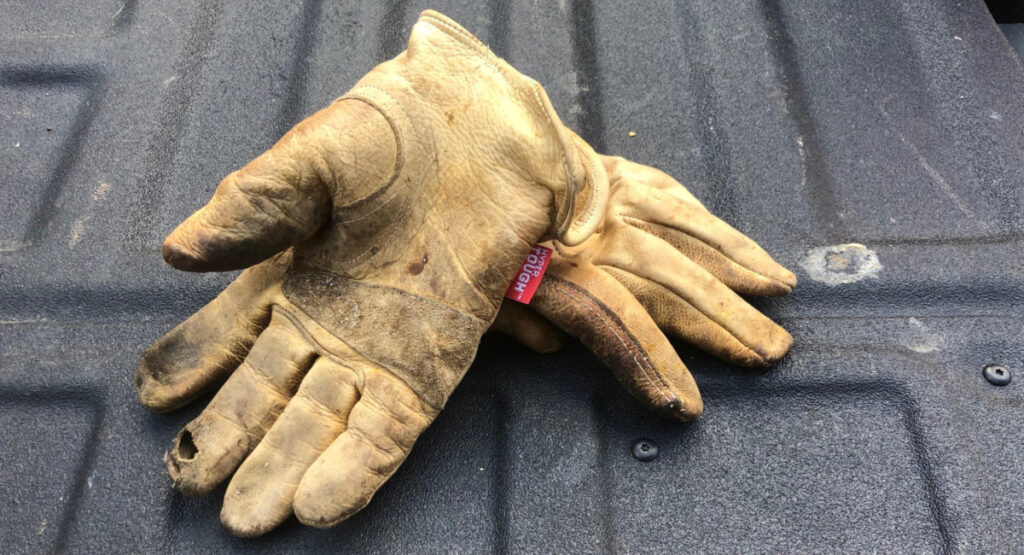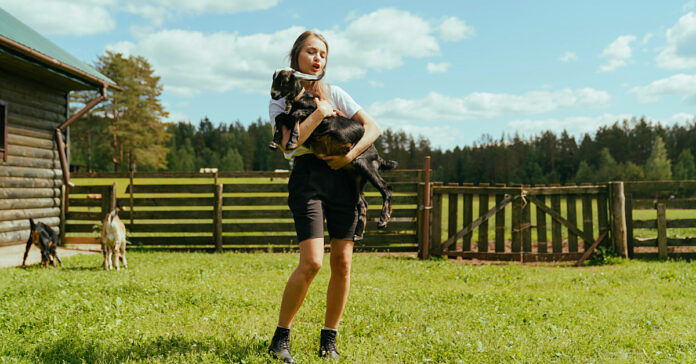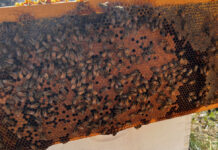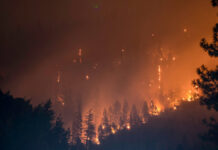A young woman is coming to spend a few days with us for an introduction to homesteading. She’s a friend of my daughter who is interested in homesteading and wants to see if she has what it takes before she and her partner decided to do it.
We’re going to start her off with slaughtering chickens. She’ll also help harvest some honey, stack some firewood, pick beans in the garden, and maybe do some weed whacking, but the chickens are the most important part. If you can’t bring yourself to butcher an animal, kill a predator, or dispose of a carcass, you probably won’t be much of a homesteader. Even people that focus on raising vegetables instead of livestock usually have chickens, and a well-rounded homestead has both.
Before you buy some property with big dreams in your head, try your hand at killing a cute fuzzy something and make sure you can live with it. Because death is unavoidable on a Homestead. (We know people that stopped raising rabbits because they had a hard time killing them.)
If she does well on this trial run, she may make it onto the list of people my daughter can bring with her to stay here during a survival situation.
Dressing for the Part
In giving this young woman some tips on what she should bring, I inadvertently put together a list of clothing and footwear which should be useful for anyone thinking of becoming a homesteader. I’m sharing an expanded version of it with you because I expect there are some readers who want to be homesteader one day, but that day is not yet here.
No Flip Flops
It seems like flip flops, slides, sandals and other opened toed footwear are popular today. I see people doing stupid stuff like wearing them hiking, riding a bike, and in the snow. On our homestead, the only time you may wear anything like a flip flop is when you are sitting on the deck having a refreshing adult beverage. Open-toed footwear on a homestead is asking for trouble.
Proper footwear for the chore is not only a safety issue, but a sanitary one. Not only will bees and yellow jackets (who live in holes in the ground) sting your exposed feet, you will be working in mud and manure. That means you need to wear your boots outside and take them off before you enter the living areas of your home. We have a mudroom with a row of boots in it. The lineup differs by season, but it never goes away. Even if you don’t have your own livestock, chances are you will buy manure to fertilize your growing areas, so this rule applies: don’t get poop on your bare feet or track into your living quarters.
A farm boot is the most important piece of footwear for a homesteader. These are far more useful and less pretty than gardening boots sold at places like Target. I like the Muck Chore Boot. It has a rugged sole, a rubber lower with no seams, and a neoprene upper. This is a waterproof boot in which you can do almost any farm chore in almost any weather. You can also hunt, fish, and recreate in them, although many opt for a boot in camo for those activities. With the appropriate socks, they are warm in the winter, although they can cause your feet to sweat in hot weather. If they develop a leak, which should not happen for years, that’s a sign you need new ones. They are indispensable and worth every bit of their $110 price tag.
I also have a pair or safety toe boots I wear while with working with firewood or dealing with anything heavy. Dropping something on your toe can take you out of action for days or weeks. I know because it happened to me when I was younger and dumber. Learn from my bad example and protect your feet with either a composite safety toe or a steel toe.
Hiking boots or more generic work boots are also useful on the homestead l, but don’t replace the Muck boots. I wear mine walking the dog or going into town. In the winter, I often wear hikers with 400 grams of Thinsulate insulation.
Work Gloves
Last week, I scraped my thumb in twice and my index finger once over the course of two different incidents. Proof I should wear work gloves more often. I know to wear them when processing or stacking firewood to avoid getting splinters, but sometimes I don’t have a pair on when I should. My hands are tough enough that I don’t get blisters using tools, but gloves also protect your hands from injury.
The problem with small cuts and scrapes on your hands isn’t that they are painful or debilitating. The problem is that they could become infected. For this reason, I clean cuts out, wash them with hydrogen peroxide, apply triple antibiotic ointment, and slap on a bandage for a couple of days. It may only happen once in a hundred times, but if your finger gets hot and you see red streaks working up your finger, hand, or arm, you better get to the clinic quick because you have a severe infection. It’s far better to take some basic precautions than to get blood poisoning.

On our homestead, I use the following gloves:
- Beekeeping gloves to avoid stings on my hands and fingers. I usually wear a short pair, but I also have gauntlets to wear if the bees are angry. So far, I only needed them once this year.
- Cheap knit gloves with a latex or similar palm and finger. These are great for stacking firewood and are less than $2 at Harbor Freight. I go through two pairs in a season. I also have a thermal version.
- Leather work gloves, like those pictured above. These are good all-around work gloves and what I wear when using tools. I also have an insulated version for cold days.
- Rubber gloves. I wear the cheap disposable ones that were popular during COVID. They are useful for messy jobs like processing honey or gutting chickens. I also wear them while painting. My wife prefers re-usable dish gloves.
- Insulated gloves for winter.
- Tactical gloves. I own several pairs that provide armor or padding for my knuckles. I wear them as needed and not just for shooting.
- Welding gloves. I don’t weld, but we wear these gauntlets when working with the wood stove. It allows limited manual handing of burning logs and prevents burns from brushing against a hot stove door. They also eliminate splinters.
Work Clothes
You need sturdy work wear when you work on the homestead. Like boots and gloves, these clothes will also serve you well post-SHTF. It is easy to get dirty and clothes need to stand up to repeated washings. You will also appreciate pants and shirts that don’t snag and tear. We have every-day work clothes and then older work clothes for the dirtiest jobs.
I have a set of overalls which I can put over my clothes when painting or doing other dirty work. I also occasionally wear a carpenter’s apron. The pockets come in handy. Both will protect the clothes under them.
I don’t like overalls, because I hang a holster on my belt. I don’t know how I’d carry a gun in overalls, other than in a pocket. Overalls are useful and wear well. Around here, women wear them, too. If you want to look authentic, get yourself a pair.
Insulated coveralls (or snow mobile suits) and overalls are great for cold climates. When we get snow, I wear an old pair of ski bibs, but when they give up the ghost, I’m getting a pair of insulated Carhartts.
Rain Gear
When you homestead, you can’t take the day off because it is raining. The goats or cows still need to be milked. The chickens still need to be fed. I wear a poncho, but I also have a rain jacket and matching pants. Our Much boots are perfect for wearing in the rain.
Avoiding Injury
Earlier this year, I drove a neighbor to get X-rays and seven stitches after a piece of equipment fell on his arm. He showed up at my house looking a little pale and shaky and didn’t want to drive himself. He was up and about working on his homestead the next day, but I’d like to avoid stitches if possible.
Farming is one of the most dangerous jobs, and while most homesteaders do not use as large equipment as they do on farms, homesteading has its share of dangers. Axes, mauls, chainsaws, shovels, digging bars, and motorized equipment can still cause damage. Plus, it takes a while for an ambulance to get out to the boonies. Better to avoid injury in the first place.
Being safe comes down to being careful, to thinking about what you are doing, to wearing the proper protective equipment, and to using the right tool for the job. For example, I wear chainsaw chaps when sawing and safety toe boots. I wear eye protection (goggles or ballistic-rated sunglasses from Wily-X) whenever I am outdoors and add hearing protection when using small engines or riding the tractor.
I was friends with someone before and after the freak accident in which he lost an eye on the job. OSHA said it was one of those one-in-a-million chances where he did everything right, but he still caught the equivalent of a piece of shrapnel in his eye. If you’ve ever had a fishing hook fly past your head, a bungee cord spring towards your face, or a piece of lead or copper jacket bounce back to you off a steel target, you’ve had a close call. That’s why wearing eyewear that meets the ANSI impact resistant standards is important while working or playing.
Knowing your own limitations is also important. Don’t overdo it. Don’t step or jump too far. If you think, “I probably should do it,” then don’t! You have nothing to prove and lots to protect. Better safe than sorry. Don’t be the person whose last words are, “Watch this!”
First Aid Supplies
I can’t count the number of first aid kits I have on hand. I also carry small fabric bandages in my wallet, a habit I picked up when I had kids. In addition to using these myself, I have handed them out to distraught mothers whose kid got a scraped knee or other minor injury while out in public. Band-Aids don’t deaden the pain, but they make kids feel better. Every parent should carry a few.
I carry a tourniquet in my pocket and two more in my EDC bag, along with a 4” compression bandage, 6” Israeli battle dressing, gauze for wound packing, and some QuikClot. I think I only have one chest seal, but I have many other useful items, from airways to eye washes, on our first aid shelf. These are on hand for prepping purposes, but they also come in handy for homesteading. Hopefully, we won’t need to use any of these on our guest, but she may well need some ibuprofen for sore muscles by the time we’re done with her.







